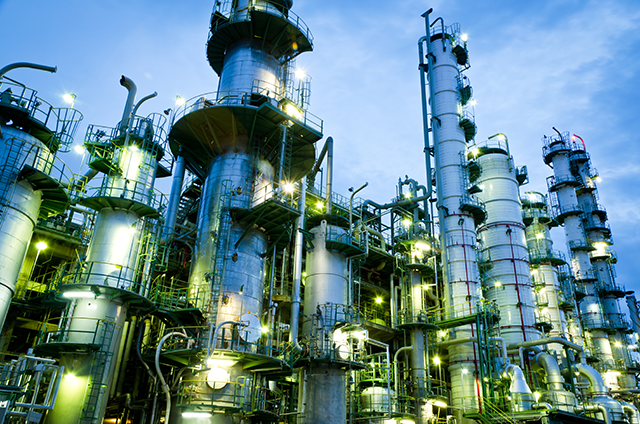Process Summary
Amine gas treating, also known as gas sweetening, emerged in the 1930s with monoethanolamine (MEA) as the first commercial solvent for acid gas removal. This chemical absorption process revolutionized natural gas processing by enabling efficient removal of hydrogen sulfide (H₂S) and carbon dioxide (CO₂) from sour gas streams. The technology gained prominence due to increasing environmental regulations and pipeline specifications requiring low sulfur content in natural gas. By the 1970s, tertiary amines like methyldiethanolamine (MDEA) were developed, offering selective H₂S removal and reduced energy consumption compared to early solvents.
Use Cases
The amine process remains the dominant acid gas removal technology today, particularly for streams with moderate to high H₂S concentrations. Its primary use cases include:
- Natural gas sweetening: Meeting pipeline specifications (typically <4 ppm H₂S and <2% CO₂)
- Refinery operations: Treating hydrotreater off-gases and fluid catalytic cracker streams
- LNG production: Protecting cryogenic equipment from freeze-outs and corrosion
- Enhanced oil recovery: Purifying CO₂ for reinjection
Notably, amine units demonstrate versatility across gas compositions, with plants processing from under 1 MMSCFD to over 500 MMSCFD of sour gas. The adaptability to varying acid gas concentrations and selective removal capabilities make it preferable to physical solvents when H₂S removal is critical.
Process Flow
A standard amine treating unit operates through interconnected absorption and regeneration cycles, as per illustration (attached image). The process follows these sequential steps:
Step 1: Absorption in Contactor Tower
- Sour gas enters the bottom of the absorber at 35-50°C and 5-205 atm pressure, flowing upward through structured packing.
- Lean amine (typically 20-50% aqueous solution) descends counter-currently, chemically absorbing H₂S and CO₂ via exothermic reactions.
- Sweetened gas exits the tower top while rich amine collects at the bottom.
Step 2: Rich Amine Flash and Heat Exchange
- The rich amine passes through a flash drum to recover entrained hydrocarbons, which are recycled as fuel gas.
- The solution then preheats in a rich/lean heat exchanger, recovering ~60% of regeneration energy by transferring heat from hot lean amine.
Step 3: Regeneration in Stripper
- Pressurized rich amine enters the regenerator (operating at 100-126°C), where steam from the reboiler strips acid gases.
- The overhead vapor (H₂S, CO₂, steam) condenses in a reflux condenser, with condensed water returning to the column.
- Acid gases proceed to sulfur recovery or incineration.
Step 4: Lean Amine Recirculation
- Regenerated lean amine exits the stripper bottom, passes through the rich/lean exchanger, and cools further in an air cooler before recycling to the absorber.
- A filtration system typically removes heat-stable salts and degradation products to maintain solvent integrity
Process Efficiency, Performance and Plant Capacities
Amine plant efficiency hinges on solvent selection and operating parameters. Key performance metrics include:
Solvent Performance Characteristics
MDEA-based solvents dominate modern installations due to higher H₂S selectivity (up to 90% versus CO₂) and 20-30% lower regeneration energy than MEA. Hybrid solvents like MDEA/DEA blends achieve near-complete acid gas removal with 15-20% energy savings versus standalone MDEA.
| Amine Type |
H₂S Selectivity |
CO₂ Removal |
Energy Consumption |
| MEA |
Low |
High |
High |
| DEA |
Moderate |
High |
Moderate |
| MDEA |
High |
Adjustable |
Low |
| MDEA/DEA |
High |
High |
Moderate |
Plant Capacities
Plant capacities demonstrate significant scalability:
- Small units: <10 MMSCFD (e.g., remote gas fields)
- Mid-scale: 50-200 MMSCFD (typical LNG trains)
- Large units: >500 MMSCFD (major gas processing hubs)
Performance Optimization
Performance optimization focuses on:
- Circulation rate: Lower rates reduce pumping costs but risk insufficient treating.
- Lean amine temperature: Maintained 5-10°C above gas temperature to prevent hydrocarbon condensation.
- Stripping ratio: Optimized at ~0.12 kg steam/liter amine to minimize energy use.
- Acid gas loading: Typically 0.3-0.5 mol acid gas/mol amine to limit corrosion.
Modern amine units achieve >99.9% H₂S removal and 90-99% CO₂ removal, with economic evaluations showing 50% lower capital costs and 20-48% operating cost savings versus hot carbonate processes. Continuous monitoring of solvent concentration, temperature, and acid gas loading remains critical for maintaining peak efficiency while minimizing corrosion and solvent degradation.
References
Perplexity A.I. assisted article generation based on publicly retrievable information (19th Jun 2025)










